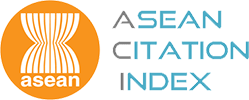FRAUD RISK MANAGEMENT AND FRAUD REDUCTION
EVIDENCE FROM THE NIGERIAN OIL AND GAS SECTOR
DOI:
https://doi.org/10.32890/mmj2022.26.6Keywords:
Fraud Reduction, Fraud Risk Management, Internal Control, Whistle Blowing, fraud responseAbstract
The study examined the effect of fraud risk management techniques on fraud reduction in the oil and gas sector in Nigeria. The study used primary data which were obtained through a structured questionnaire. The population of the study consisted of 106 staff of the two top firms in the oil and gas sector in Nigeria. A total of 54 staff were purposively selected from the accounting department and 52 from the risk management department. They were selected due to their knowledge and expertise in field of study. A hundred copies of the study questionnaire were retrieved, and the data analysis was done using an ANOVA test. The findings showed that fraud risk management techniques, which included internal control, whistle blowing, fraud awareness/training, and fraud response, had a significant and positive effect on fraud reduction. Computer forensic exhibited a negative, but significant effect on fraud reduction. The study concluded that fraud risk management techniques effectively enhanced fraud reduction in the oil and gas sector. It has therefore, recommended that fraud risk management techniques should be widely employed in the oil and gas sector in Nigeria as it has been proven to be effective in fraud reduction.
Downloads
Metrics
Additional Files
Published
How to Cite
Issue
Section
License
Copyright (c) 2022 Malaysian Management Journal

This work is licensed under a Creative Commons Attribution 4.0 International License.









